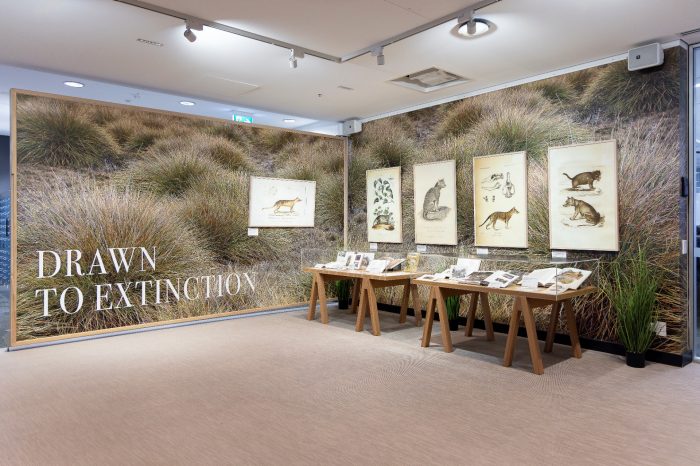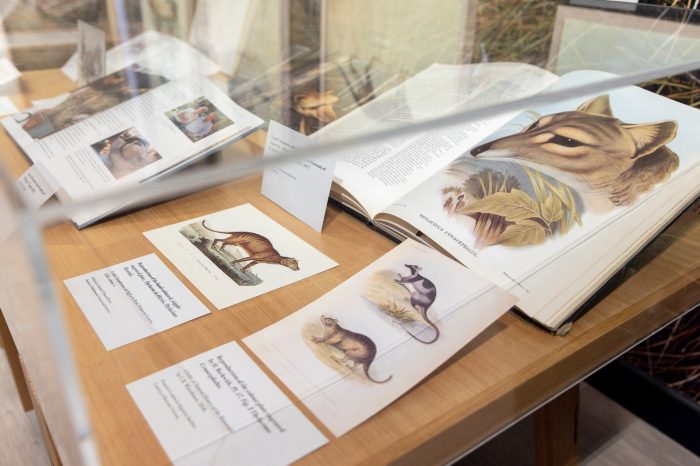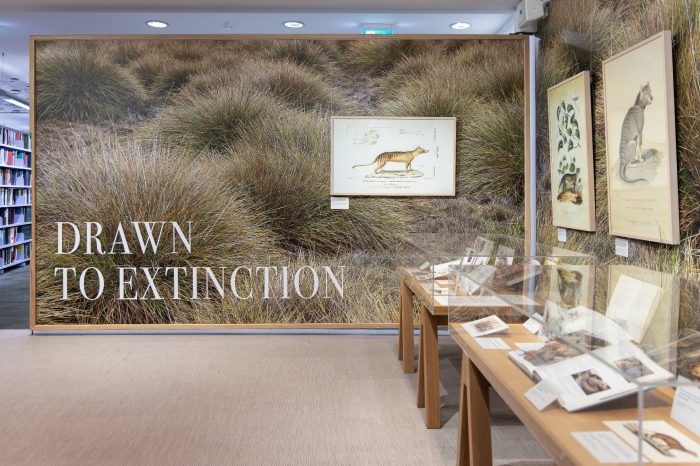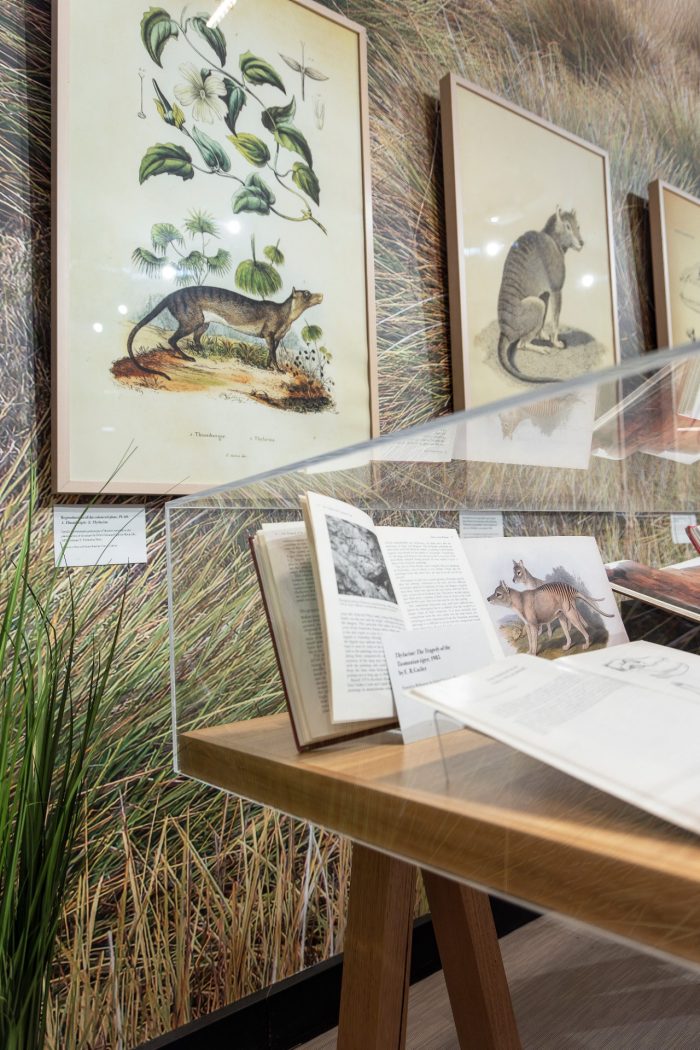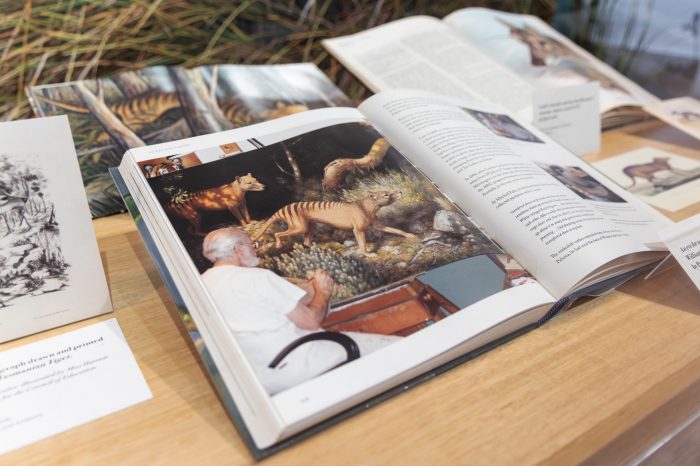Drawn to Extinction
This display of books and artist reproductions explores the visual legacy of the Tasmanian tiger as an Australian icon and a cautionary tale imprinted onto our cultural memory.
When:
On view from 7 August 2025
Where:
Law Library
The thylacine, also known as the Tasmanian tiger, was once the largest carnivorous marsupial found in the grasslands of Tasmania. It was a medium-sized, dog-like animal with a sandy yellowish-brown coat, distinctive dark stripes across its back and rump, a stiff tail, and powerful jaws. Although the last known thylacine died in captivity in 1936, it was not officially declared extinct until 1986. Its tragic demise is a cautionary tale of how fear, misinformation, and delayed conservation efforts can lead to the loss of an entire species.
However, the thylacine's story lives on through enigmatic illustrations, sketches, and artworks. By rendering these animals in lifelike detail, artists can stir emotions and remind us of the rich biodiversity that once existed and the irreversible impact of extinction. The thylacine endures—not as a specimen but as a symbol of wonder, mystery, and regret, a powerful reminder of how a species can be lost.
Artists continue to bring the thylacine to life by drawing inspiration from rare black-and-white photographs, eyewitness accounts, and their own imagination. This visual legacy is a testament to how it has become an icon of Australian folklore and a cautionary tale imprinted onto our cultural memory. The legend of the thylacine continues to fuel debates about wildlife protection and even inspires efforts to “de-extinct” it through advances in genetic science.
Top image: Detail of the colour plate Thylacine de Harris. Thylacinus Harrisii printed by de Langlois in Atlas de zoologie : ou collection de 100 planches by Paul Gervais (1844). Published in Paris by Germer Bailliere. Courtesy of Museums Victoria.
Accessibility: UNSW Law Library is wheelchair accessible and there is step-free access to the exhibition space. Displays and explanatory texts can be seen and read from a seated position and the exhibition includes large-text artwork labels.
Exhibition image gallery


